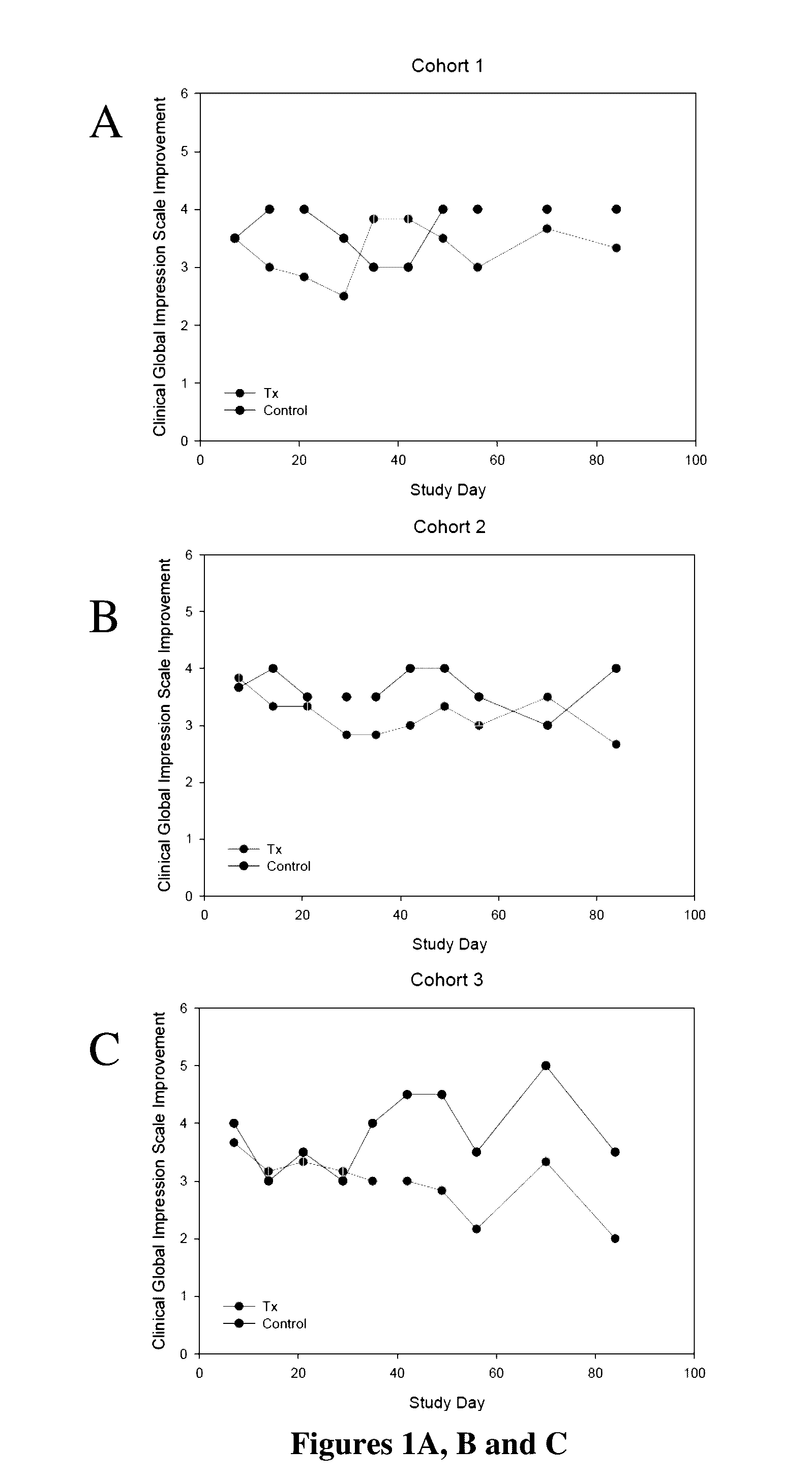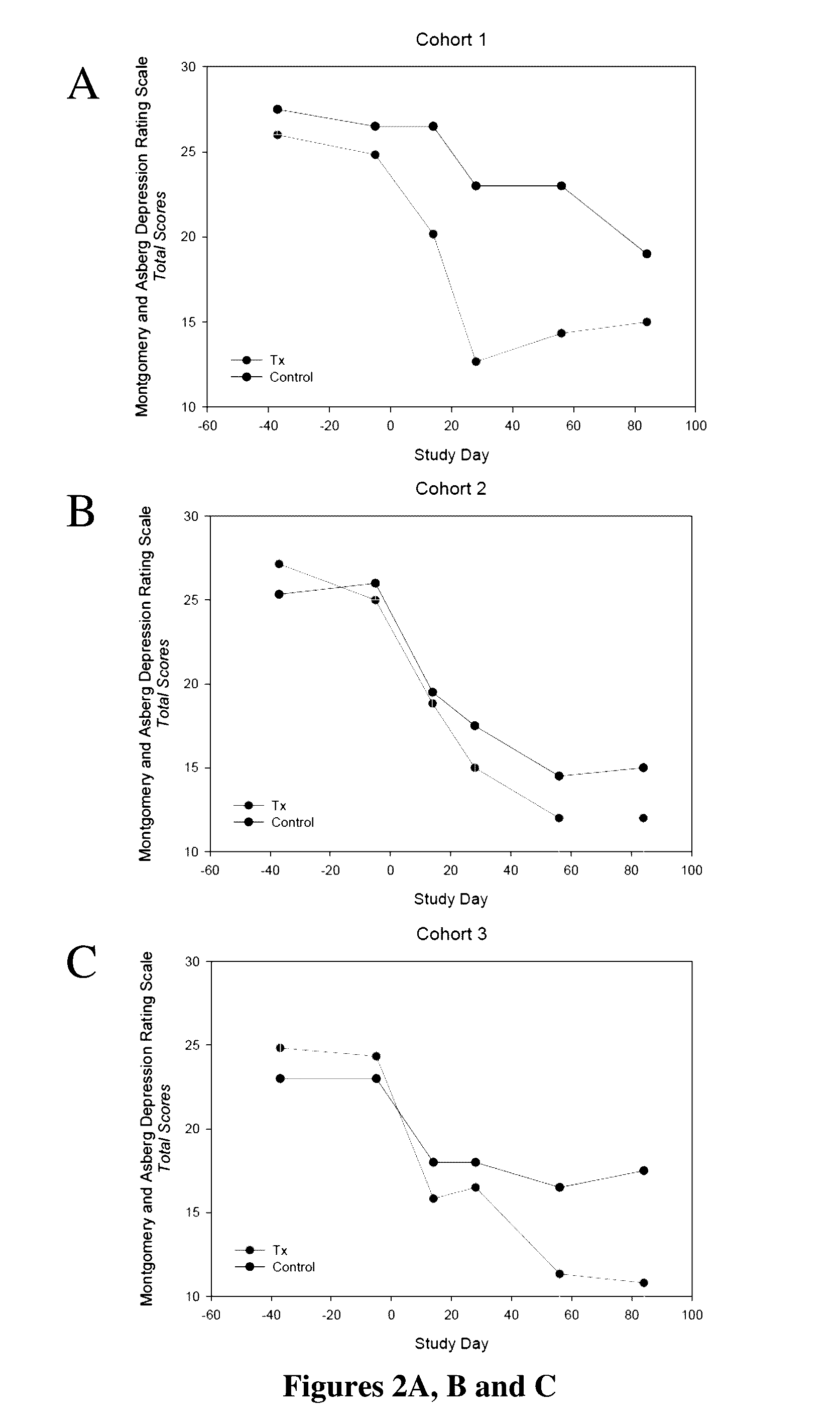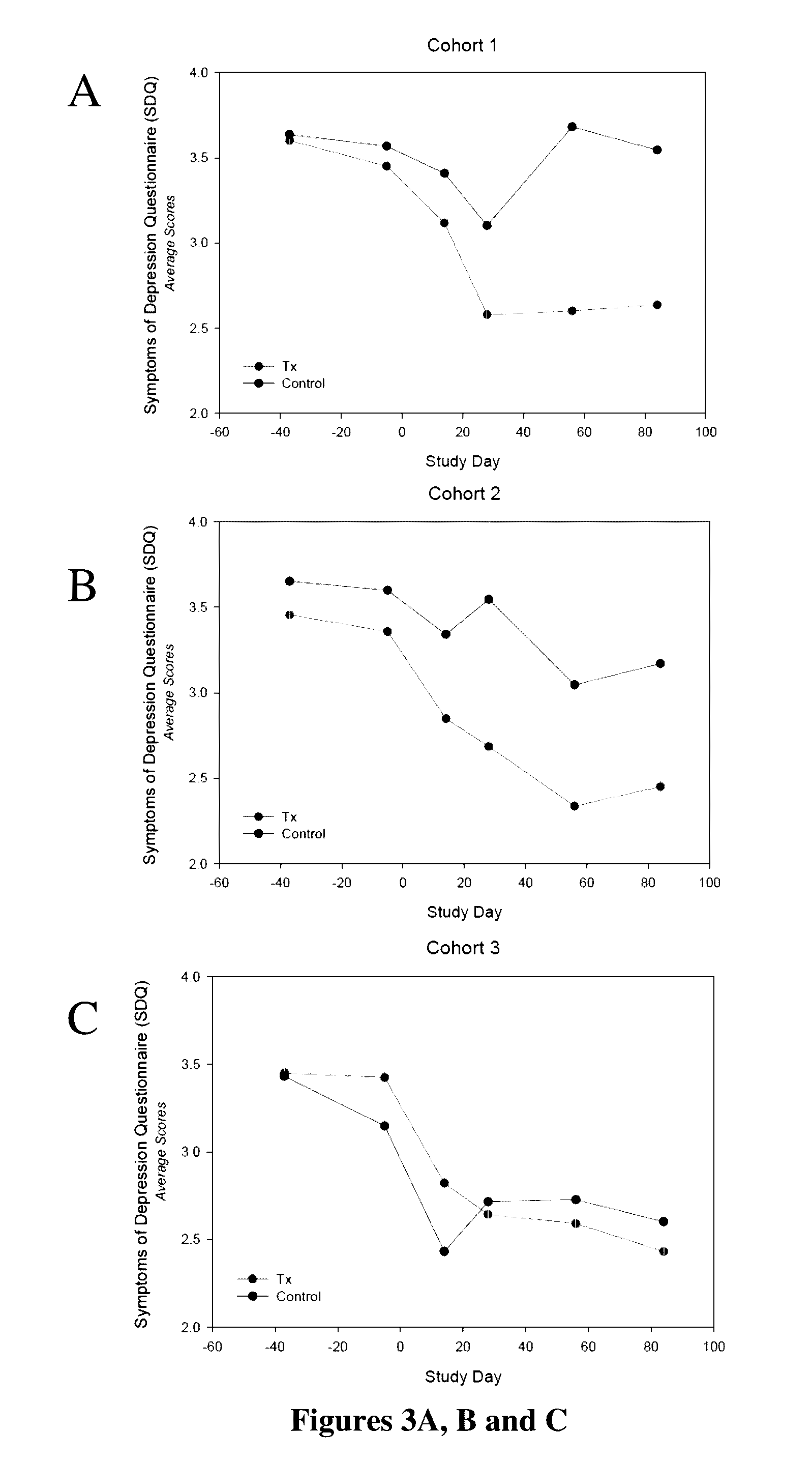Protocols for treatment of major depressive disorder (MDD)
a major depressive disorder and protocol technology, applied in the field of depression, can solve the problems of not being able to provide information, nor have specific recommendations,
- Summary
- Abstract
- Description
- Claims
- Application Information
AI Technical Summary
Benefits of technology
Problems solved by technology
Method used
Image
Examples
example 1
Responses Measured by qEEG
[0025]A double-blind, placebo-controlled, multiple-ascending-dose study employing the compound of formula (1) was performed in patients with symptomatic MDD. Twenty-four subjects were recruited, with their diagnosis and illness severity confirmed through an independent, remote SAFER interview (Targum, S. D., et al., CNS Neurosci. Ther. (2008) 14:2-9) from the Massachusetts General Hospital (MGH) Clinical Trials Network and Institute (CTNI) raters. Each patient underwent a screening for eligibility (Day −37 to Day −6 or −3) and eligible patients were admitted into the unit on Day −5 to complete their wash-out and be reconfirmed for eligibility and for baseline assessments. The patients received daily dosing of formula (1) or placebo for 28 days starting on Day 1 and were followed for safety, pharmacokinetics (PK) and pharmacodynamics (PD) until discharge. At the conclusion of in-house dosing (Day 28), patients remained in the unit for up to 3 additional days...
example 2
Evaluation by Standard Tests
[0030]In this example, the results of the study of Example 1 were evaluated by the efficacy assessments that included the Montgomery-Asberg Depression Rating Scale (MADRS), the Clinician Global Impression-Improvement (CGI-I), the Symptoms of Depression Questionnaire (SDQ) and the Cognitive and Physical Functioning Questionnaire (CPFQ). Despite the minimal improvement observed among the placebo-treated patients, at Day 28, the efficacy measurements appeared to show a clinically meaningful reduction in depressive and cognitive symptoms across all measures for the two lower doses (40 mg / day and 80 mg / day) but not for the highest dose (120 mg / day). However, further analysis showed that the highest dose (120 mg / day) also was effective in improving the condition of these patients. These improvements persisted over time during the follow-up for MADRS, SDQ and CPFQ.
[0031]Specifically as shown in FIGS. 1A, B and C, on Day 28, patients administered 40 mg / day of for...
PUM
| Property | Measurement | Unit |
|---|---|---|
| disorder | aaaaa | aaaaa |
| Cognitive and Physical Functioning Questionnaire | aaaaa | aaaaa |
| Disorder | aaaaa | aaaaa |
Abstract
Description
Claims
Application Information
 Login to View More
Login to View More - R&D
- Intellectual Property
- Life Sciences
- Materials
- Tech Scout
- Unparalleled Data Quality
- Higher Quality Content
- 60% Fewer Hallucinations
Browse by: Latest US Patents, China's latest patents, Technical Efficacy Thesaurus, Application Domain, Technology Topic, Popular Technical Reports.
© 2025 PatSnap. All rights reserved.Legal|Privacy policy|Modern Slavery Act Transparency Statement|Sitemap|About US| Contact US: help@patsnap.com



